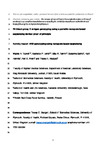Rh blood group D antigen genotyping using a portable nanopore based sequencing device: proof of principle
| dc.contributor.author | Tounsi, WA | |
| dc.contributor.author | Lenis, VP | |
| dc.contributor.author | Tammi, SM | |
| dc.contributor.author | Sainio, S | |
| dc.contributor.author | Haimila, K | |
| dc.contributor.author | Avent, ND | |
| dc.contributor.author | Madgett, TE | |
| dc.date.accessioned | 2022-05-16T09:06:48Z | |
| dc.date.issued | 2022-06-02 | |
| dc.identifier.uri | http://hdl.handle.net/10026.1/19225 | |
| dc.description.abstract |
Background Nanopore sequencing is direct sequencing of a single-stranded DNA molecule using biological pores. A portable nanopore-based sequencing device from Oxford Nanopore Technologies (MinION) depends on driving a DNA molecule through nanopores embedded in a membrane using a voltage. Changes in current are then measured by a sensor, thousands of times per second and translated to nucleobases. Methods Genomic DNA (gDNA) samples (n = 13) were tested for Rh blood group D antigen (RHD) gene zygosity using droplet digital PCR. The RHD gene was amplified in 6 overlapping amplicons using long-range PCR. Amplicons were purified, and the sequencing library was prepared following the 1D Native barcoding gDNA protocol. Sequencing was carried out with 1D flow cells R9 version. Data analysis included basecalling, aligning to the RHD reference sequence, and calling variants. Variants detected were compared to the results acquired previously by the Ion Personal Genome Machine (Ion PGM). Results Up to 500× sequence coverage across the RHD gene allowed accurate variant calling. Exonic changes in the RHD gene allowed RHD allele determination for all samples sequenced except 1 RHD homozygous sample, where 2 heterozygous RHD variant alleles are suspected. There were 3 known variant RHD alleles (RHD*01W.02, RHD*11, and RHD*15) and 6 novel RHD variant alleles, as previously seen in Ion PGM sequencing data for these samples. Conclusions MinION was effective in blood group genotyping, provided enough sequencing data to achieve high coverage of the RHD gene, and enabled confident calling of variants and RHD allele determination. | |
| dc.language.iso | en | |
| dc.rights | Attribution-NonCommercial-NoDerivatives 4.0 International | |
| dc.rights.uri | http://creativecommons.org/licenses/by-nc-nd/4.0/ | |
| dc.title | Rh blood group D antigen genotyping using a portable nanopore based sequencing device: proof of principle | |
| dc.type | journal-article | |
| plymouth.journal | Clinical Chemistry | |
| dc.identifier.doi | 10.1093/clinchem/hvac075 | |
| plymouth.organisational-group | /Plymouth | |
| plymouth.organisational-group | /Plymouth/Faculty of Health | |
| plymouth.organisational-group | /Plymouth/Faculty of Health/School of Biomedical Sciences | |
| plymouth.organisational-group | /Plymouth/REF 2021 Researchers by UoA | |
| plymouth.organisational-group | /Plymouth/REF 2021 Researchers by UoA/UoA01 Clinical Medicine | |
| plymouth.organisational-group | /Plymouth/Research Groups | |
| plymouth.organisational-group | /Plymouth/Research Groups/Institute of Translational and Stratified Medicine (ITSMED) | |
| plymouth.organisational-group | /Plymouth/Research Groups/Institute of Translational and Stratified Medicine (ITSMED)/CBR | |
| plymouth.organisational-group | /Plymouth/Research Groups/Plymouth Institute of Health and Care Research (PIHR) | |
| plymouth.organisational-group | /Plymouth/Users by role | |
| plymouth.organisational-group | /Plymouth/Users by role/Academics | |
| dcterms.dateAccepted | 2022-04-13 | |
| dc.rights.embargodate | 2022-6-14 | |
| dc.rights.embargoperiod | Not known | |
| rioxxterms.versionofrecord | 10.1093/clinchem/hvac075 | |
| rioxxterms.licenseref.uri | http://creativecommons.org/licenses/by-nc-nd/4.0/ | |
| rioxxterms.type | Journal Article/Review |



